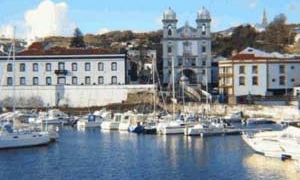Scientists have confirmed a new bleaching event after conducting aerial surveys of 300 “shallow” coral reefs amidst rising sea temperatures that threaten the habitats of thousands of marine organisms.
On March 8, Australian officials warned that a widespread bleaching phenomenon is occurring at the country’s famous coral reefs, as rising sea temperatures endanger the habitats of numerous marine life.

Great Barrier Reef off the coast of Queensland, Australia. (Photo: AFP/TTXVN)
Environment Minister Tanya Plibersek emphasized that climate change is the greatest threat to coral reefs worldwide, and the Great Barrier Reef is no exception.
This marks the seventh time the Great Barrier Reef has experienced a widespread bleaching event. Previously, this renowned reef has suffered from six severe bleaching incidents in 1998, 2002, 2016, 2017, 2020, and 2022.
Australian government scientists confirmed the new bleaching event following aerial surveys of 300 “shallow” coral reefs.
The management agency for the Great Barrier Reef stated that further surveys will be needed to assess the scale and severity of this bleaching event.
According to monitoring results, sea temperatures along the Great Barrier Reef have reached record highs in recent weeks.
Richard Leck, head of the marine department at the World Wildlife Fund Australia, warned that there is a risk of mass coral die-off if ocean temperatures do not cool down soon in the coming weeks.
He noted that this bleaching event is occurring in areas where corals have not previously been exposed to such extreme temperatures and emphasized that climate change is “putting immense pressure” on the Great Barrier Reef.
Coral bleaching occurs when elevated sea temperatures cause corals to expel the algae living in their tissues, leading to the loss of the corals’ vibrant colors.
Some species of bleached corals can recover significantly and have the potential to bounce back if ocean temperatures decrease.
| The Great Barrier Reef, the largest living structure on Earth, visible from space, was designated a UNESCO World Heritage Site in 1981. |


















































